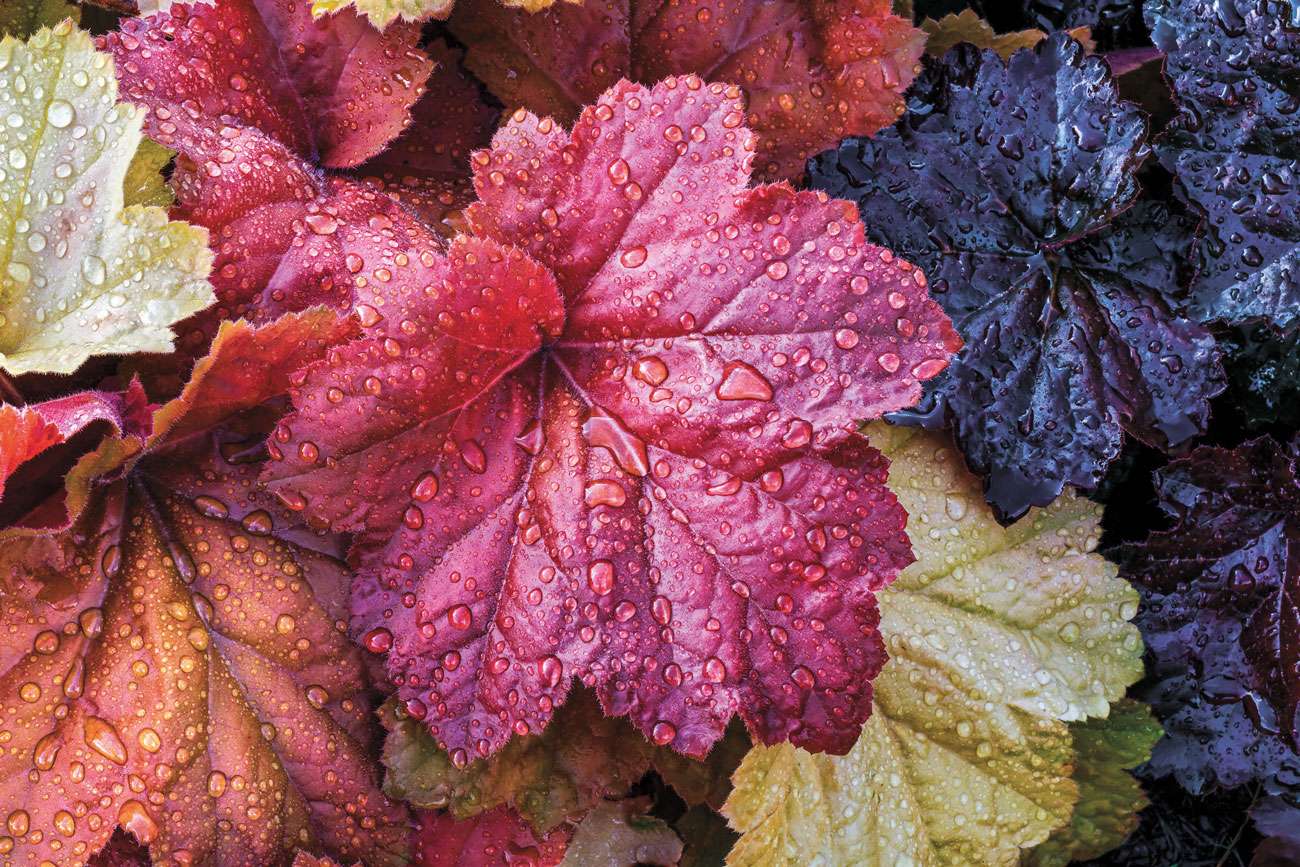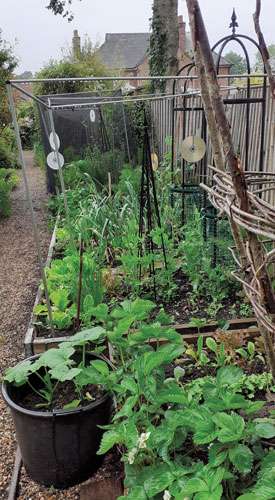
We will all have to get used to the effects of Global Warming, as weather extremes seem to have become the new norm and sustainable water use is ever more important. It pays to understand your soil and plants, to use more natural water and to design your garden with water in mind. Most of Cranleigh has clay soils, which are wet and cold in winter, slow to drain and warm up in spring but after extended dry periods they also bake dry and crack. However, they are rich in nutrients. So, I am using water collected in water butts, washing up water and the hose as little as possible, except in the vegetable patch, as that is really rather special this year. I am hoping to be self-sufficient in vegetables – including 18 tomato plants, all of which were grown from seed but safely tucked away in the greenhouse this time, after the awful attack of blight last year. Also, the shuttle cock support for the beans has survived the winter and should keep all the bean plants safe and sound this year too. As you can see, I hang CDs from the frames to deter marauding, hungry pigeons from eating my precious veggies!
I have also grown some annual plants, which will need watering whilst they establish themselves but realise that we can introduce lots of colour from the leaves of perennials in the borders, such as heucheras and tiarellas, which not only have coloured leaves, but they spread easily and have colourful flowers on long stalks. Heucheras and tiarellas are a genus Saxifragaceae family, all of which are native to North America. They grow well in most average soils – not too wet or too dry. Heucheras dislike permanently wet, heavy or very dry soil and deep shade. Strong summer sun can scorch and crinkle the foliage, especially on paler-leaved plants. As you can see there is a wonderful range of colours available too!
There is also a good range of drought resistant varieties of perennials and here are a few to choose from: Sedum, Verbena, Salvia, Lavender, Echinops, Penstemon, Hyssop, Perovskia and of course grasses.

I have been experimenting with the Chelsea Chop on Phlox this year and hope to show you the result next month. The aim is to produce flowers in two different periods by cutting the front shoots down to half the height of the shoots further back on the plant, which means that they will produce their flowers later in the year. So watch this space! Also, I did do No Mow May again this year and have had a wonderful range of wild flowers such as ajuga, daisies, vetch, buttercups and clover in the grass and lots of pollinating insects visiting the additional flowers, so I will be continuing in some areas until later in the year.
Finally, roses are the star flower in June and there are a huge number of varieties, so there is a rose for every possible spot in the garden. David Austin is a very reliable supplier and my favourite for flower shape and perfume has to be Ann Boleyn.
Roses do need a bit of care with regular feeding and spraying to keep them healthy and bug free. Banana skins are rich in potassium and so I sprinkle some cut up skins around the roots – cheap but effective. Also, roses are grafted onto a sturdy root stock, which often sends up suckers (shoots) from the base of the rose, which need to be removed to ensure all the strength remains in the main plant. If the shoot is cut off using secateurs, part of the bud may be left intact, so it is best to tear the shoot off downwards to stop it regrowing.
Enjoy this month when we can at last relax in our gardens with friends and family!











